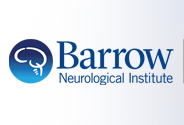The neural basis of attaining conscious awareness of sad mood.
Document Type
Article
Abstract
The neural processes associated with becoming aware of sad mood are not fully understood. We examined the dynamic process of becoming aware of sad mood and recovery from sad mood. Sixteen healthy subjects underwent fMRI while participating in a sadness induction task designed to allow for variable mood induction times. Individualized regressors linearly modeled the time periods during the attainment of self-reported sad and baseline "neutral" mood states, and the validity of the linearity assumption was further tested using independent component analysis. During sadness induction the dorsomedial and ventrolateral prefrontal cortices, and anterior insula exhibited a linear increase in the blood oxygen level-dependent (BOLD) signal until subjects became aware of a sad mood and then a subsequent linear decrease as subjects transitioned from sadness back to the non-sadness baseline condition. These findings extend understanding of the neural basis of conscious emotional experience.
Medical Subject Headings
Adolescent; Adult; Affect; Awareness; Brain; Brain Mapping; Cerebrovascular Circulation; Female; Humans; Linear Models; Magnetic Resonance Imaging; Male; Middle Aged; Neuropsychological Tests; Oxygen; Self Report; Young Adult
Publication Date
9-1-2015
Publication Title
Brain Imaging Behav
ISSN
1931-7565
Volume
9
Issue
3
First Page
574
Last Page
587
PubMed ID
25234799
Digital Object Identifier (DOI)
10.1007/s11682-014-9318-8
Recommended Citation
Smith, Ryan; Braden, B Blair; Chen, Kewei; Ponce, Francisco A; Lane, Richard D; and Baxter, Leslie C, "The neural basis of attaining conscious awareness of sad mood." (2015). Neurosurgery. 2083.
https://scholar.barrowneuro.org/neurosurgery/2083


